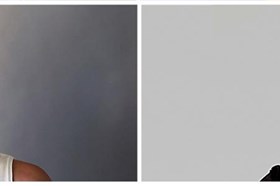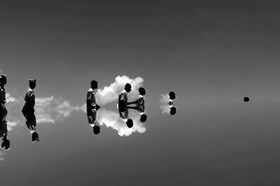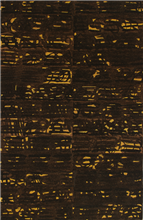cape reviews
The Looming Presence of Olivié Keck
Olivie Keck at Commune.1
By Anna Stielau23 September - 23 October. 0 Comment(s)
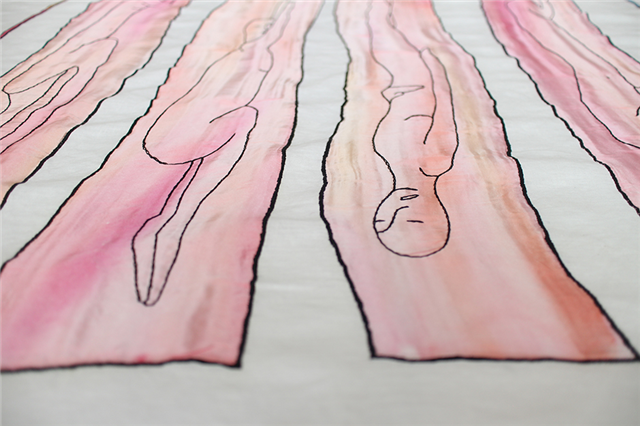
Olivie Keck
Detail from The After Party,
2014.
Linen, silk and embroidery cotton
120 x 147 cm.
It’s a little known fact that Sigmund Freud disapproved of embroidery. He believed with his trademark causal certainty that 'dispositional hypnoid states' could grow out of the day-dreams to which needlework and similar occupations 'render women especially prone.' Freud cheerfully attributed all manner of troubles to sewing, from sexual deviance to hysteria. Each had its root not in the impulse to produce an object – that domestic and seemingly domesticated final product – but in the conditions of the action itself. Meditative and quiet, embroidery allows time for thought. In some ways it’s as much a being as a doing.
art events calendar
VIEW FULL CALENDARbuy art prints
edition of 60: R3,200.00
About Editions for ArtThrob
Outstanding prints by top South African artists. Your chance to purchase SA art at affordable prices.
FIND OUT MORE Editions for artthrob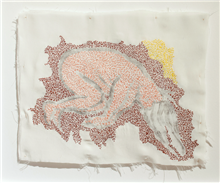
Olivie Keck
Lost in The Light IV
2014
Silk, relief printing ink and embroidery cotton
25 x 31 cm
'False Priest' at Commune 1, Olivié Keck’s first solo show, anticipates a kind of looking that Freud might consider dangerously dispositional. Taking as its point of departure the dream and the daydream, this wistful collection of works is unified not by narrative nor by privileging a single medium (although admittedly embroidery dominates) but rather by a state of consciousness inspired in the viewer. These are pieces that insist upon, even demand, contemplation. A palette heavy on muted peaches and blues sets the tone, while detailed surfaces invite closer inspection.
This sense of serenity is misleading. Like the silence and stillness of Freud’s dreaming needleworker, 'False Priest' masks depths that emerge in glimpses, often as a consequence of dialogues engineered by some savvy curatorial decision making. Take the vast embroidery The Big Sleep, in which a female figure sprawls across a windblown landscape. Her eyes are closed and her hands clasped against her naked chest. She seems peaceful. What is it about the intimacy of watching a sleeper that is so compelling, so immediately resonant? However, the adjacent series of smaller silk relief and embroidered pieces – collectively titled Lost in the Light – open up the possibility of another reading. A long-haired humanoid form hesitates, stumbles, falls, and is still. This isn’t merely a sleep but a big sleep; a death. These are dreams from which waking is no longer possible.
There’s no shortage of morbidity in the world of needlework. In The Subversive Stitch, Roziska Parker points out that a concern with mortality comes to the fore in the sampler, traditionally used to demonstrate a needleworker’s skill. Some choice examples of popular samplers include this 1713 classic:
Dear Child delay no time
But with all speed amend
The longer thou dost live
The nearer to thy end.
Or better yet this 1819 charmer, at home on any wall:
And am I born to die
To lay this body down
And must my trembling spirit fly
Into a world unknown

Olivie Keck
Detail from Living with the Living, and Dying with the Dead
2014
Quilt made with poly-cotton and embroidery thread
214 x 146 cm
That 'world unknown' has long been the domain of women. Parker frames the embroiderer’s fascination with death by thinking through women as psychopomps, escorting souls into the afterlife. Women may give life, she suggests, but they also mark its passing. In the case of family members who die at home, it is the women of the household who were historically charged with nursing the dying. Stitching was something you did to while away the hours before the inevitable.
Parker’s (and Keck’s) correlation between sewing and death is an old one indeed. Classic mythology has its fair share of women weavers. To the Greeks, a thread could end a life. The three Moirae or Fates spun and severed the threads of human life. It could preserve a life, in the case of Ariadne of Crete who loved the hero Theseus enough to give him the ball of thread that saved his life in the Minotaur’s labyrinth. Sewing could extend a life indefinitely, as it did for poor Arachne who challenged Athena to a weaving contest and was condemned to spin webs for eternity. More than that, weaving could tell a life, bearing witness to its shape and form. Ovid’s imprisoned Philomena inscribed her life into a tapestry to incriminate her rapist.
The strange triad of death, cloth and storytelling interweave in the world of 'False Priest'. 'Each work,' Keck suggests, 'is a tale about existing,' a fabric/ation in the oldest sense of the word. Some are shorter stories than others. Living with the living, dying with dead (2014) makes the show’s arena of engagement explicit. Although at first it resembles a pleasing textile, the poly-cotton quilt rapidly reconfigures itself into a Boschian landscape of tiny, tumbling figures. Red thread picks out lone bodies amidst the throng, singling out figures that fall alone, together. I’m reminded here of the myoclonic jerk, that sudden involuntary spasm on the edge of sleep so often accompanied by a sensation of falling. It results from disorientation in the brain, or so I’m told … an automatic startle response produced by the drop of brain activity that precedes sleep and death alike.
The choice of the quilt form is an interesting one, and not just because of its legacy as a means of alternative storytelling. In Bless you (2012), another quilt piece, printed handkerchiefs provide an inventory of all Keck’s possessions. Objects stand in for the artist herself, documenting an external life as a means to chart the contours of an internal one. Like the form they take, these things suggest a person but also mark an absence. The quilt is comforting but unused and unusable; the objects isolated and fixed forever out of time. Together they call a body into being in order to hold that same body at bay. There is nothing complete or definitive about this collection – it withholds more information than it conveys.
Embroidery in art practice is almost invariably employed to evoke the home. Explaining her turn to needlework toward the end of her life, Louise Bourgeois recalls 'when I was growing up all the women in my house were using needles. I have always had a fascination with the needle, the magic power of the needle. The needle is used to repair damage. It’s a claim to forgiveness. It is never aggressive, it’s not a pin.' Although Keck, like Bourgeois, appeals to the realm of domestic experience – to sleep, to sentiment, to home – 'False Priest' imagines a less reparative and more ambitious chore for needle and thread. Keck takes the particular, the private and the personal and allegorize it into the universal. Oscillating between sleep and death, between the fictive and the factual, the artist’s objects become a mobile threshold to unknown lands.



